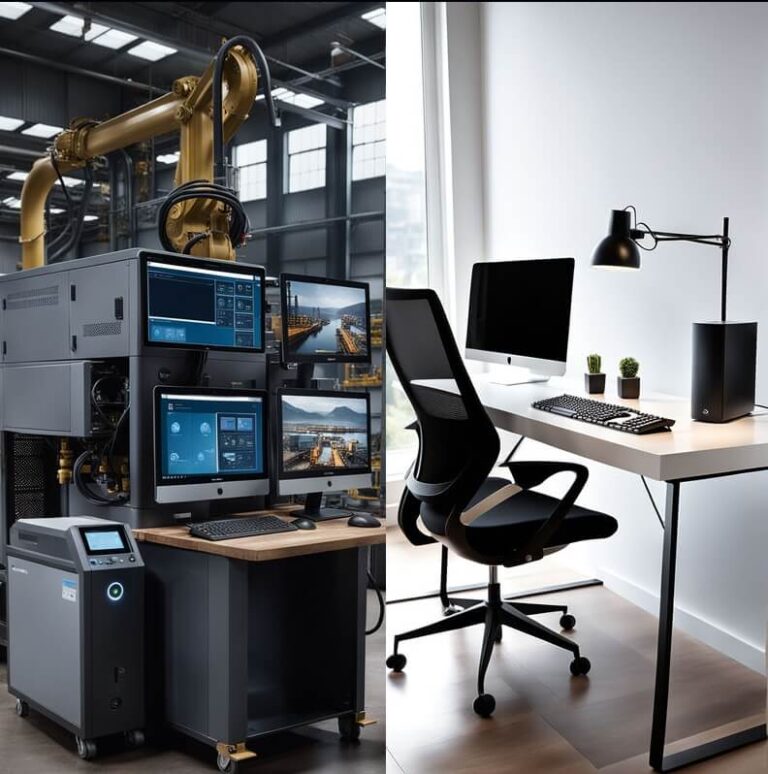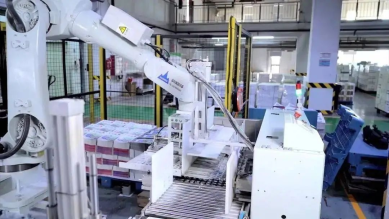Human-Machine Interface (HMI) systems play a crucial role in modern industrial environments. These systems provide a user-friendly interface for operators to interact with machinery, facilitating the monitoring, control, and management of complex industrial processes. As industries continue to evolve with advancements in technology, the importance of HMI systems in ensuring operational efficiency, safety, and productivity cannot be overstated.
What Are Human-Machine Interface (HMI) Systems?
At its core, a Human-Machine Interface (HMI) system is a platform that connects the human operator to industrial machines. It allows operators to interact with machinery, input commands, and receive feedback in real-time. These interfaces are often graphical, incorporating buttons, indicators, data displays, and other features that make it easy for users to control complex systems.
HMI systems can range from simple push-button panels to sophisticated touchscreen displays with real-time data visualization. They are commonly used in industries such as manufacturing, energy, automotive, and food processing, where the need for seamless interaction between humans and machines is critical.
Key Components of HMI Systems
The effectiveness of any HMI system lies in its components. These components include:
1. Input/Output Devices
HMI systems use various input/output devices to facilitate communication between operators and machines. Common input devices include touchscreens, keyboards, and joysticks. Output devices typically include monitors and display panels that show real-time data, alerts, and system status.
2. Control Systems
The control system is the brain of the HMI setup. It processes the input data provided by the user and sends commands to the machinery. This system is usually connected to Programmable Logic Controllers (PLCs) or other automated control devices that carry out the actual control processes.
3. Software
HMI systems rely on specialized software to provide an intuitive interface for the user. This software is responsible for data visualization, monitoring, and system diagnostics. Popular HMI software platforms include Ignition, Wonderware, and Rockwell Automation. These platforms offer a range of features such as trend analysis, alarm management, and customizable dashboards.
4. Networking and Communication Protocols
To enable seamless communication between the HMI system and the machinery, various networking and communication protocols are used. These protocols include Ethernet, Modbus, and Profibus, among others. The right communication setup ensures that the HMI system can relay commands to machines and receive data in real-time.
Benefits of Human-Machine Interface Systems
HMI systems have become indispensable in modern industrial environments due to the significant benefits they offer. These include:
1. Improved Efficiency
By providing operators with real-time data and control options, HMI systems improve operational efficiency. Operators can quickly identify issues, make adjustments, and monitor performance metrics. This leads to reduced downtime and optimized machine performance.
2. Enhanced Safety
Safety is a critical concern in any industrial setting. HMI systems help enhance safety by offering automated alarms, visual indicators, and emergency shutdown features. Operators can respond to critical events quickly, reducing the risk of accidents or equipment damage.
3. User-Friendly Interface
One of the key advantages of modern HMI systems is their user-friendly design. With touchscreen displays and customizable interfaces, operators can easily navigate the system without requiring extensive training. This accessibility reduces human error and improves overall productivity.
4. Centralized Control
HMI systems offer a centralized control platform, allowing operators to manage multiple machines from a single interface. This centralized control simplifies complex industrial processes and enables more efficient monitoring of large-scale operations.
5. Data-Driven Decision Making
The ability to visualize data in real-time is one of the most valuable features of HMI systems. Operators can use this data to make informed decisions about machine performance, production rates, and maintenance schedules. Data logging and trend analysis features provide valuable insights into long-term operational efficiency.
Applications of HMI Systems in Industry
HMI systems have widespread applications across various industries. Some of the most common use cases include:
1. Manufacturing
In manufacturing environments, HMI systems are used to monitor and control production lines. Operators can track machine performance, adjust settings, and respond to alarms in real-time. This ensures consistent product quality and minimizes downtime.
2. Energy and Utilities
In the energy sector, HMI systems are essential for managing power generation, distribution, and monitoring system performance. Whether it’s controlling wind turbines or monitoring the performance of solar power plants, HMI systems help improve energy efficiency and reduce operational costs.
3. Automotive
Automotive manufacturers use HMI systems to automate assembly lines and monitor critical equipment. With real-time data visualization, operators can quickly address bottlenecks and ensure smooth production.
4. Food and Beverage
The food and beverage industry relies heavily on HMI systems to ensure hygienic production, quality control, and efficient packaging. HMI interfaces allow operators to adjust temperatures, monitor production stages, and ensure compliance with regulatory standards.
5. Pharmaceutical
In the pharmaceutical industry, HMI systems help maintain precision and control over sensitive production processes. The ability to monitor environmental conditions, adjust machinery settings, and track production in real-time is crucial to ensure compliance with Good Manufacturing Practices (GMP).
Challenges in Implementing HMI Systems
Despite their numerous benefits, implementing HMI systems can pose challenges:
1. Compatibility Issues
Ensuring that the HMI system is compatible with existing machinery and software platforms can be a challenge. Careful planning is required to integrate the HMI system seamlessly into the existing infrastructure.
2. Cybersecurity Concerns
With HMI systems becoming increasingly connected through Industrial IoT (IIoT), the risk of cyberattacks has risen. It’s crucial to implement robust security protocols to protect the system from potential threats.
3. Cost of Implementation
While HMI systems offer long-term efficiency gains, the initial cost of implementation can be high. Companies must weigh the upfront investment against the potential for increased productivity and reduced downtime.
Future Trends in HMI Systems
As technology continues to evolve, the future of HMI systems looks promising. Key trends include:
1. Augmented Reality (AR) Integration
Augmented Reality (AR) is making its way into HMI systems, providing operators with enhanced data visualization and interaction capabilities. AR can overlay real-time data onto physical machinery, making it easier to perform maintenance and troubleshooting.
2. Cloud-Based HMI Systems
Cloud technology is enabling remote access to HMI systems, allowing operators to monitor and control machinery from anywhere. This trend is particularly beneficial for industries with multiple facilities or remote locations.
3. Artificial Intelligence (AI) and Machine Learning
The integration of AI and machine learning with HMI systems is driving advancements in predictive maintenance and automated decision-making. AI-powered HMI systems can analyze vast amounts of data, identify patterns, and make adjustments to improve performance and prevent issues before they occur.
Conclusion
Human-Machine Interface (HMI) systems are transforming industries by providing a critical link between operators and machinery. From improving efficiency and safety to enabling data-driven decision-making, HMI systems have become indispensable tools in modern industrial environments. As technology advances, the role of HMI systems will continue to evolve, offering even more capabilities to enhance productivity and operational excellence.
If you’re interested in learning more about where to purchase industrial PCs or need expert advice on choosing the right solution for your business, feel free to contact us. We are here to assist you with all your industrial PC needs.


